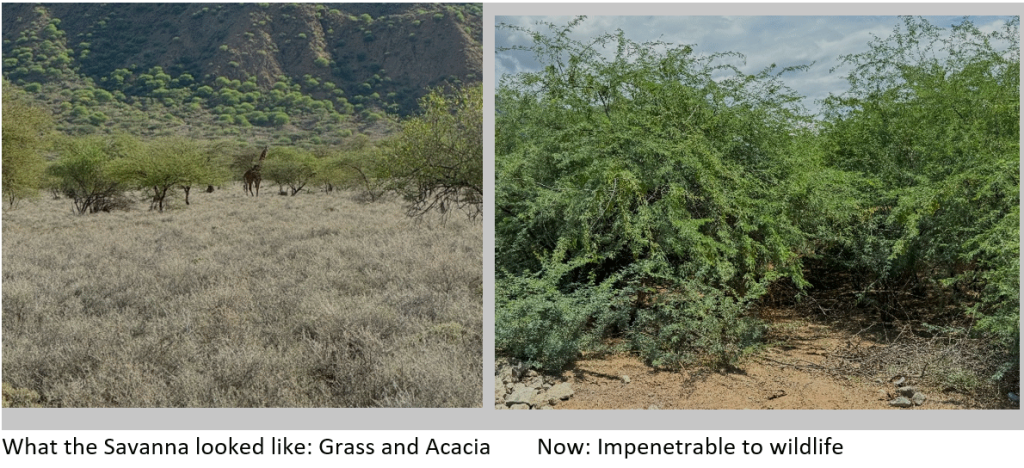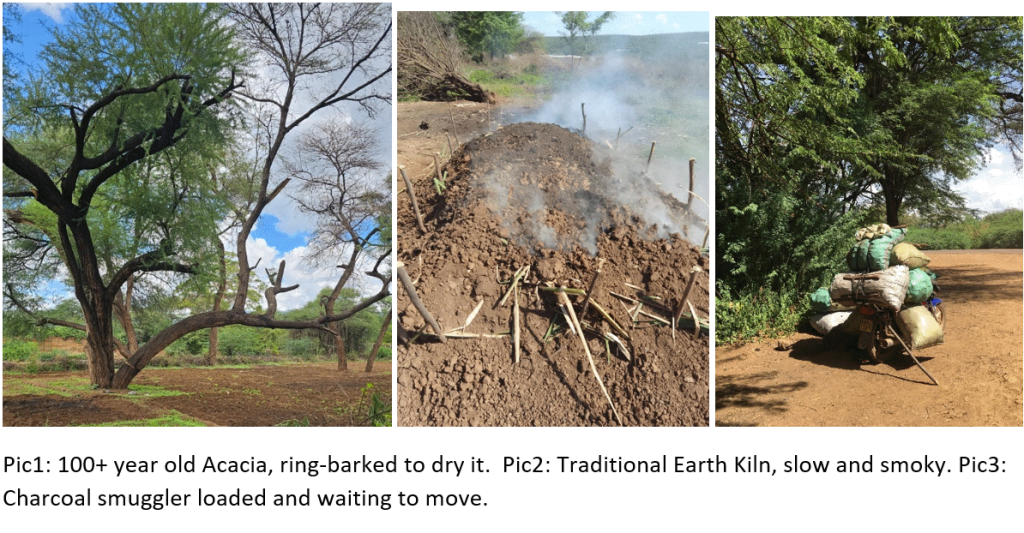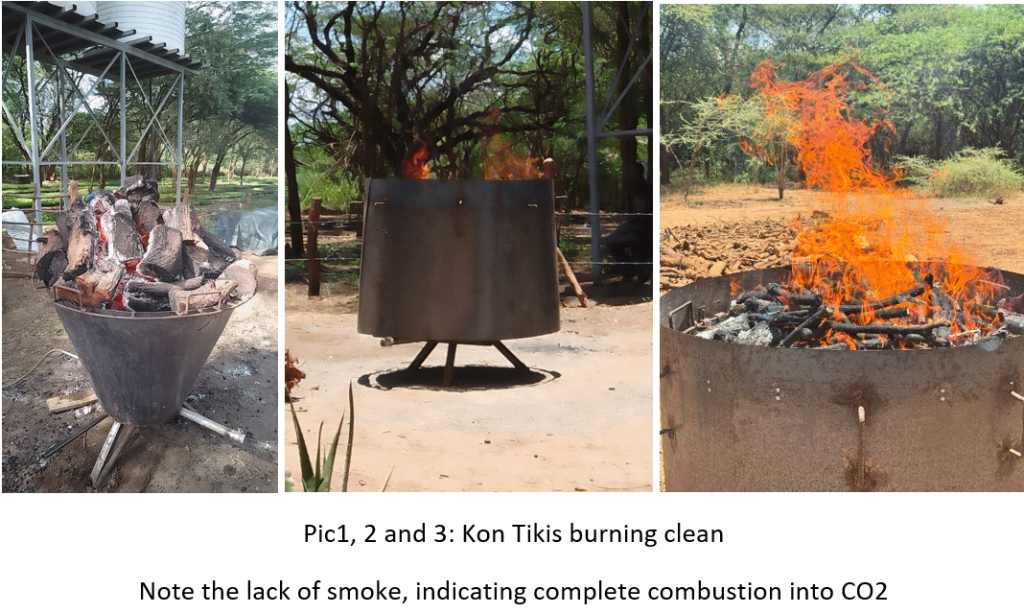About Us
We at RNBS work with rehabilitating degraded Conservation Areas and Savannah Forests, woody-weed infested grasslands invaded by Prosopis Juliflora – designated a top-100 invasive species by UNEP.

What the Savanna looked like: Grass and Acacia
Now: Impenetrable to wildlife
We make biochar using clean-burning Kon Tiki Kilns, reducing CH4 tremendously, and reducing CO2 emissions as well, when compared to the traditional methods of making charcoal-biochar.

This biochar is available as a Net-Zero biofuel – or to be buried for CDR via biochar.
The first avoids emissions from destruction of old trees and indigenous forests. The second locks carbon into the soil for 1,000+ years.
Charcoal-biochar in Kenya is made using a TEK – Traditional Earth Kiln. As per KEFRI research, the biomass conversion rate is 7% to 10%, with a slow smoky burn, and a lot of CH4 generated.

Pic1: 100+ year old Acacia, ring-barked to dry it. Pic2: Traditional Earth Kiln, slow and smoky. Pic3: Charcoal smuggler loaded and waiting to move.
The smuggler’s choice of tree is an old Acacia. To reiterate: The TEK has a 7% to 10% biomass conversion rate, burns slow and long, generating a lot of smoke and CH4 and CO. The charcoal is then loaded onto motorbikes and smuggled to the nearest urban centre to be sold for cooking fuel.
With our Kon-Tiki Kilns and variations thereof, we experience a 30% biomass conversion rate, with very little smoke and negligible CH4, due to the kiln design, it gets burned off into CO2.

Pic1, 2 and 3: Kon Tikis burning clean
Note the lack of smoke, indicating complete combustion into CO2
Our Purpose: Re-establishing native grasses and trees to tackle the following problems:
Problem1: Rising CO2 levels and CH4 levels contributing to global warming
Problem2: Degraded forests, heavily infested with Mesquite trees, killing grasses and native trees
Problem3: Deforestation of Acacia caused by charcoal smugglers
Solution1: Make biochar for CDR via burial, locking it away for 1,000+ years, using clean-burn technology.
Solution2: Cut the Mesquite, replant grasses and native trees
Solution3: Introduce Mesquite charcoal into the market, reducing demand for illegal Acacia charcoal.
Biofuels:
We make domestic and industrial biofuels from Mesquite. By using our biofuel to substitute for gas or traditional charcoal made from illegally felled native trees, you are reducing your carbon footprint from fossil fuels, reducing your carbon footprint from old forest trees, and creating local jobs in Kenya.
Biochar: By using our biochar as a soil conditioner, not only are you improving your soil structure and health, but improving crop yields and benefiting the environment by locking away carbon for 1,000+ years.your content. Have fun!